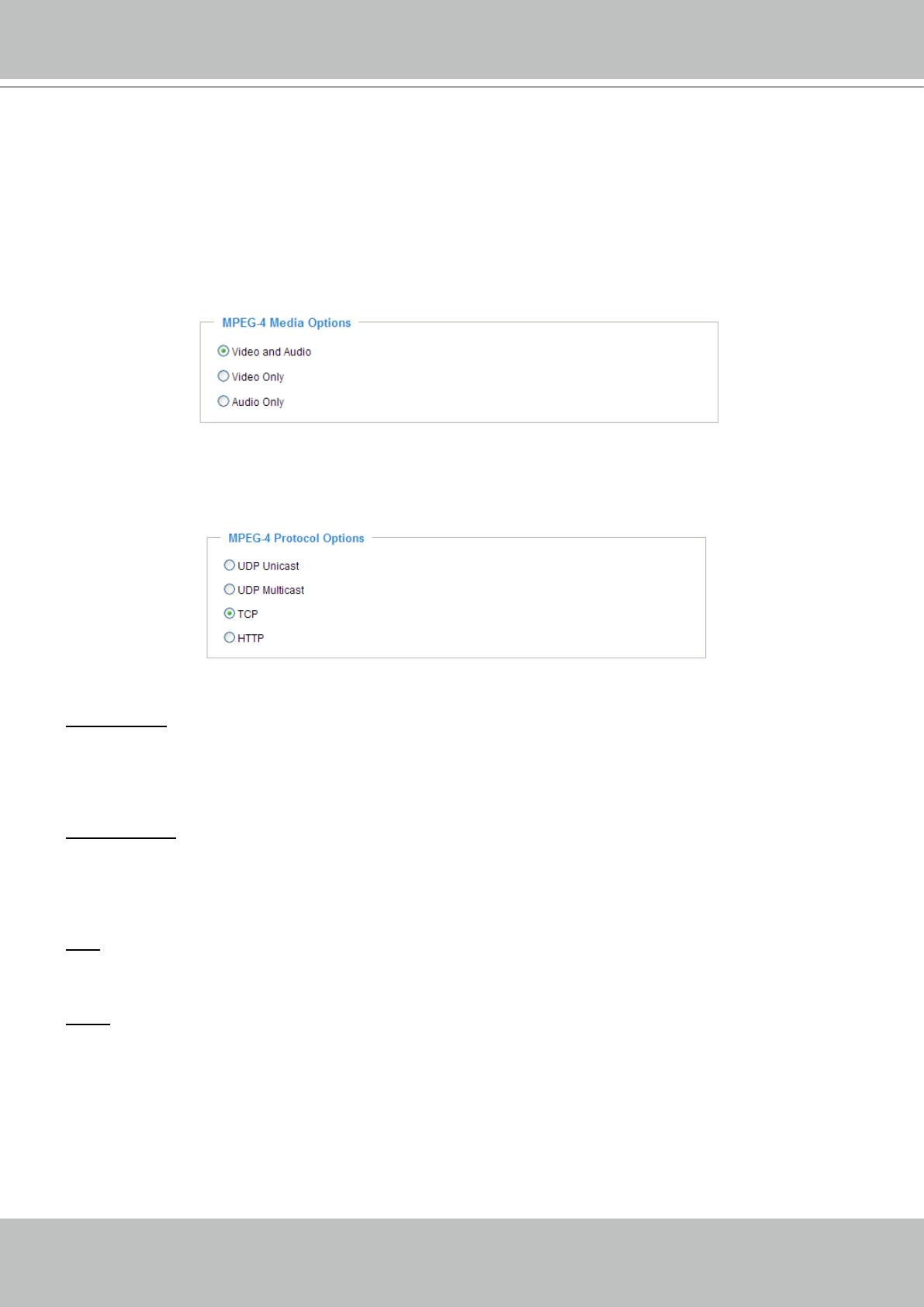
VIVOTEK - A Leading Provider of Multimedia Communication Solutions
User's Manual - 21
Client Settings
This chapter explains how to select the stream transmission mode and saving options at local
computer� When completed with the settings on this page, click Save on the page bottom to
take effect�
MPEG-4 Media Options
Select to stream video or audio data� This works only when the video mode is set to MPEG-4�
MPEG-4 Protocol Options
Depending on your network environment, there are four transmission modes of MPEG-4 streaming:
UDP unicast: This protocol allows for more real-time audio and video streams� However, network
packets may be lost due to network burst trafc and images may be broken. Activate UDP connection
when occasions require time-sensitive responses and the video quality is less important� Note that each
unicast client connecting to the server takes up additional bandwidth and the Network Camera allows up
to ten simultaneous accesses�
UDP multicast: This protocol allows multicast-enabled routers to forward network packets to all clients
requesting streaming media� This helps to reduce the network transmission load of the Network Camera
while serving multiple clients at the same time� Note that to utilize this feature, the Network Camera
must be congured to enable multicast streaming at the same time. For more information, see RTSP
Streaming on page 34�
TCP: This protocol guarantees the complete delivery of streaming data and thus provides better video
quality� Nevertheless, the downside with this protocol is that its real-time effect is not as good as that of
the UDP protocol�
HTTP: This protocol allows the same quality as TCP protocol and you don’t need to open specic port
for streaming under some network environments. Users inside a rewall can utilize this protocol to allow
streaming data to come through�


















